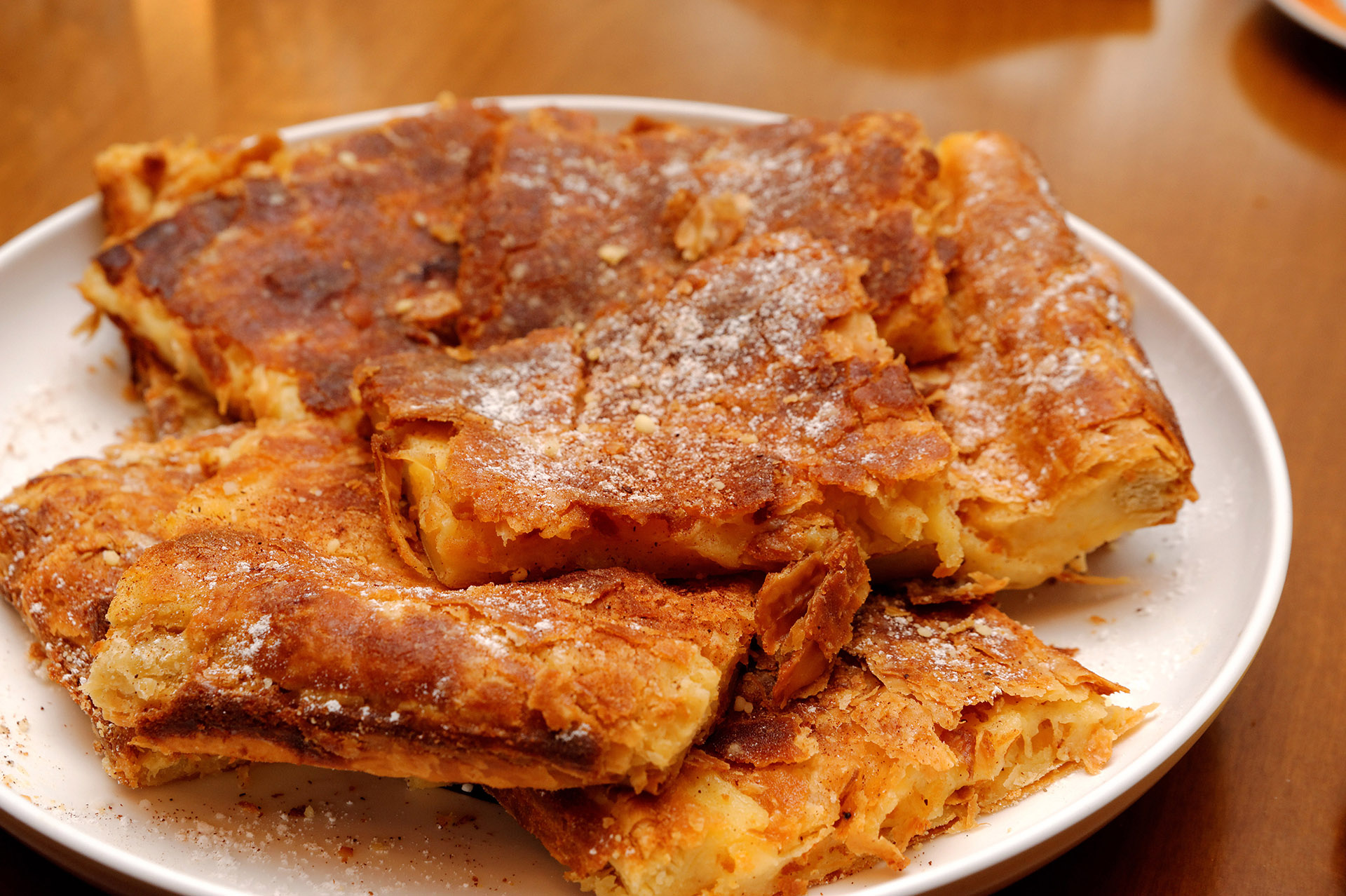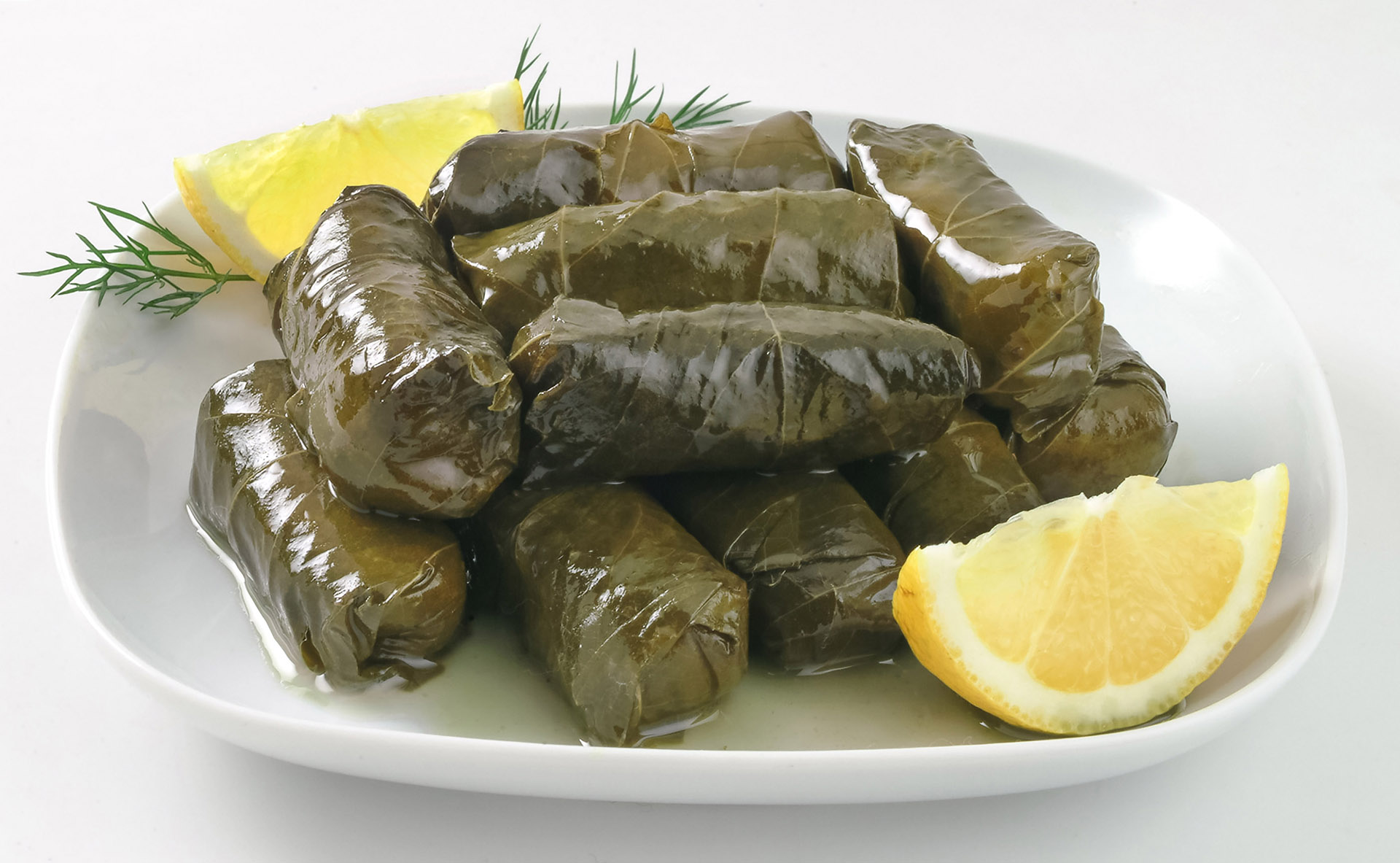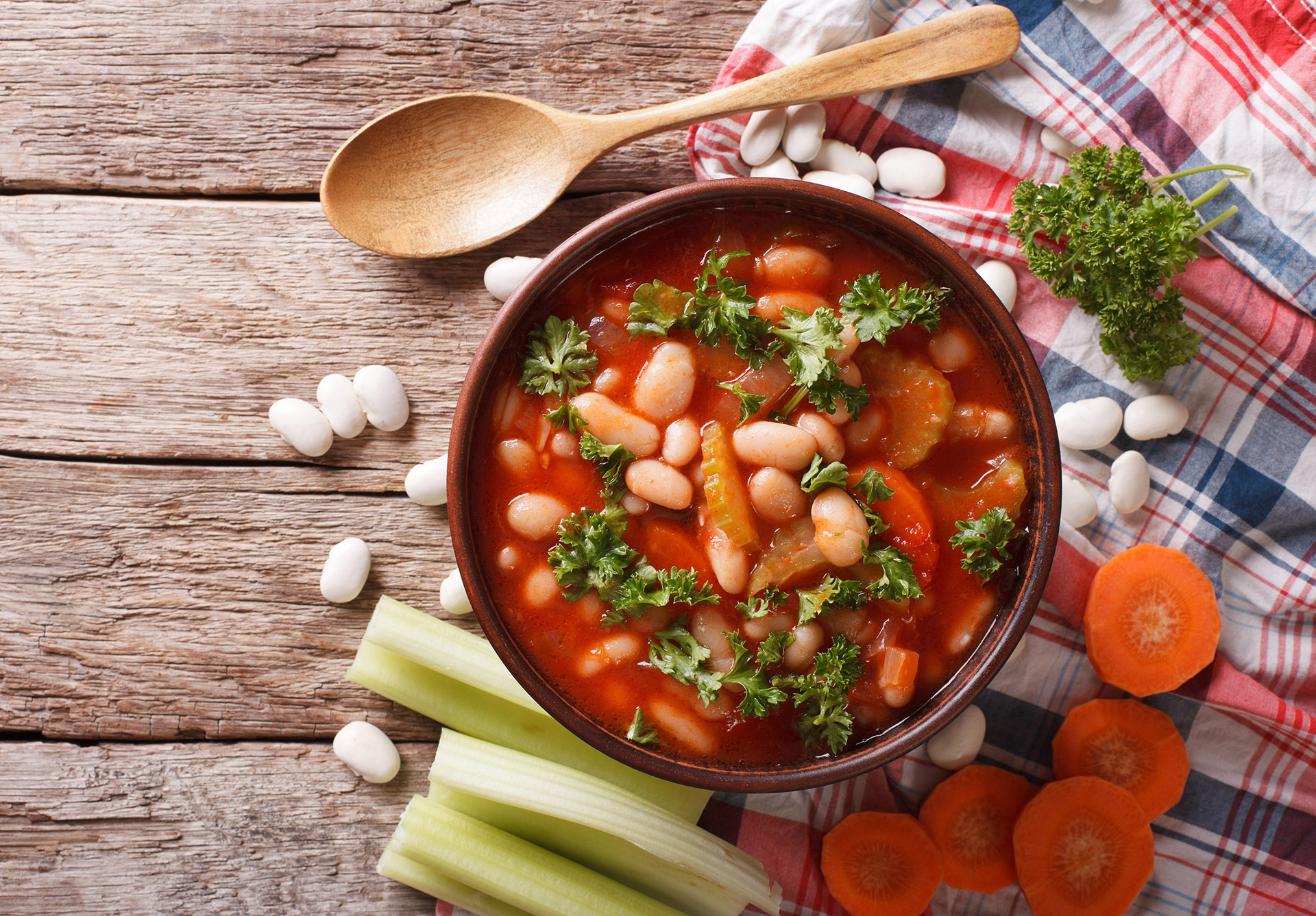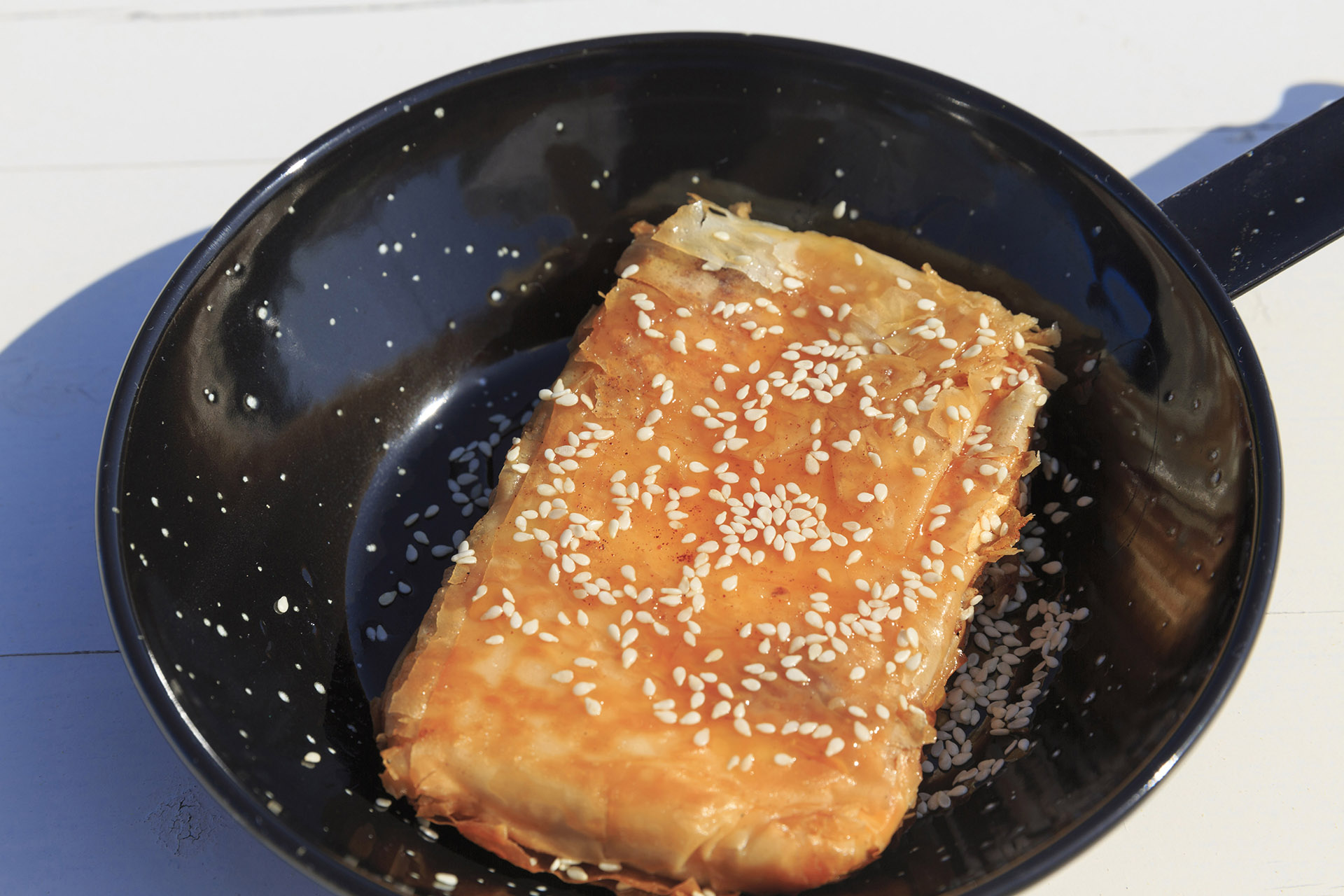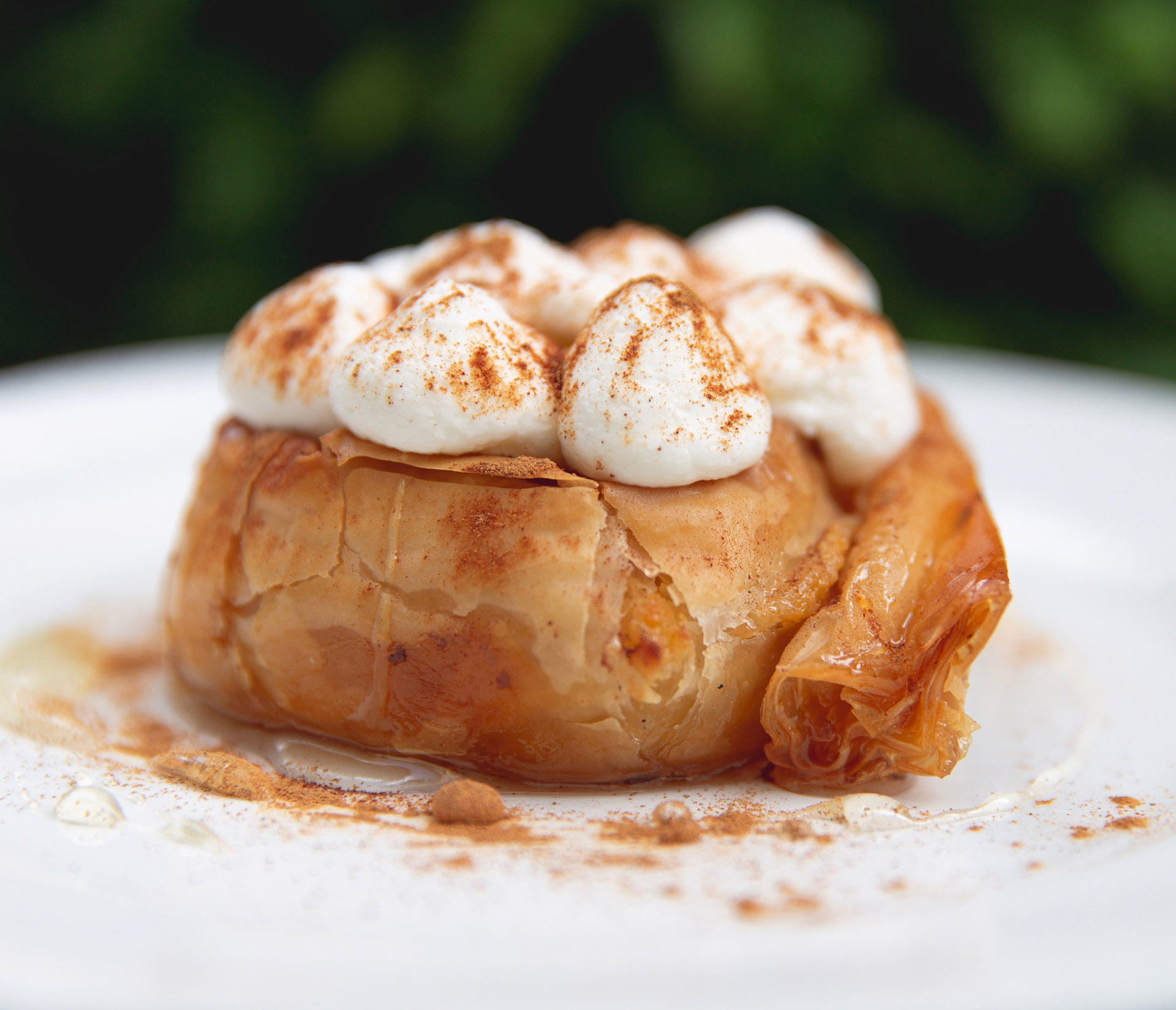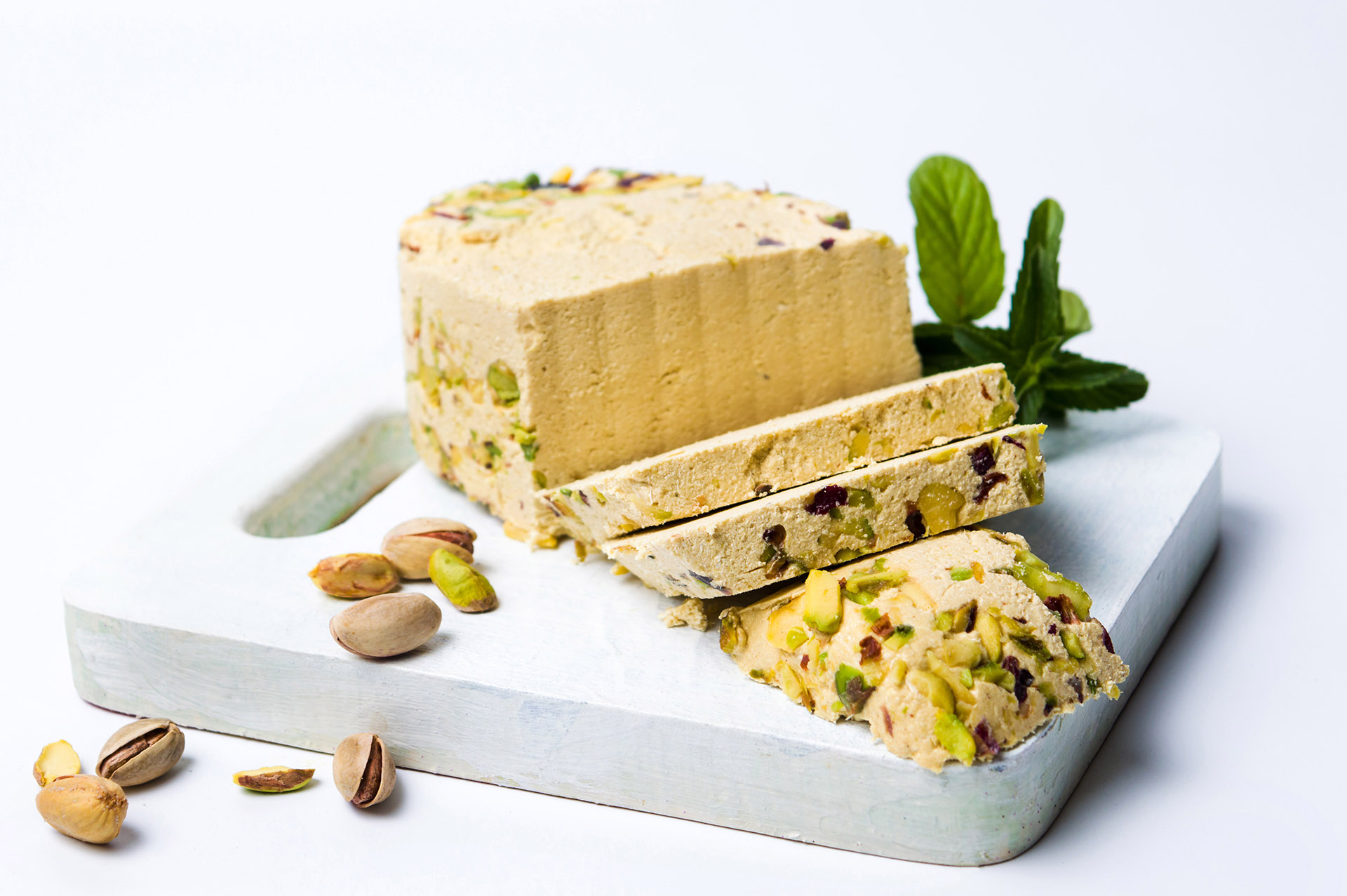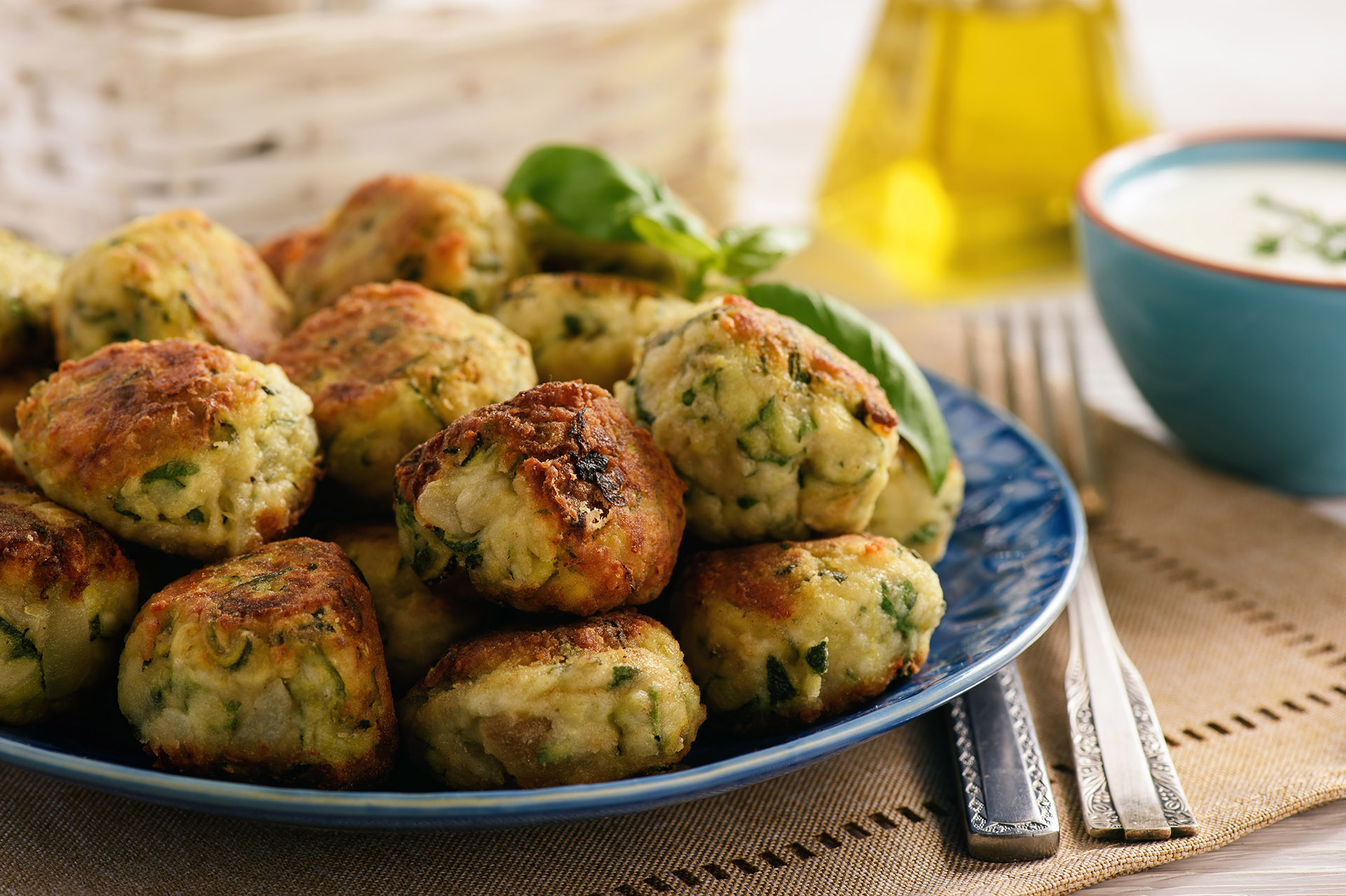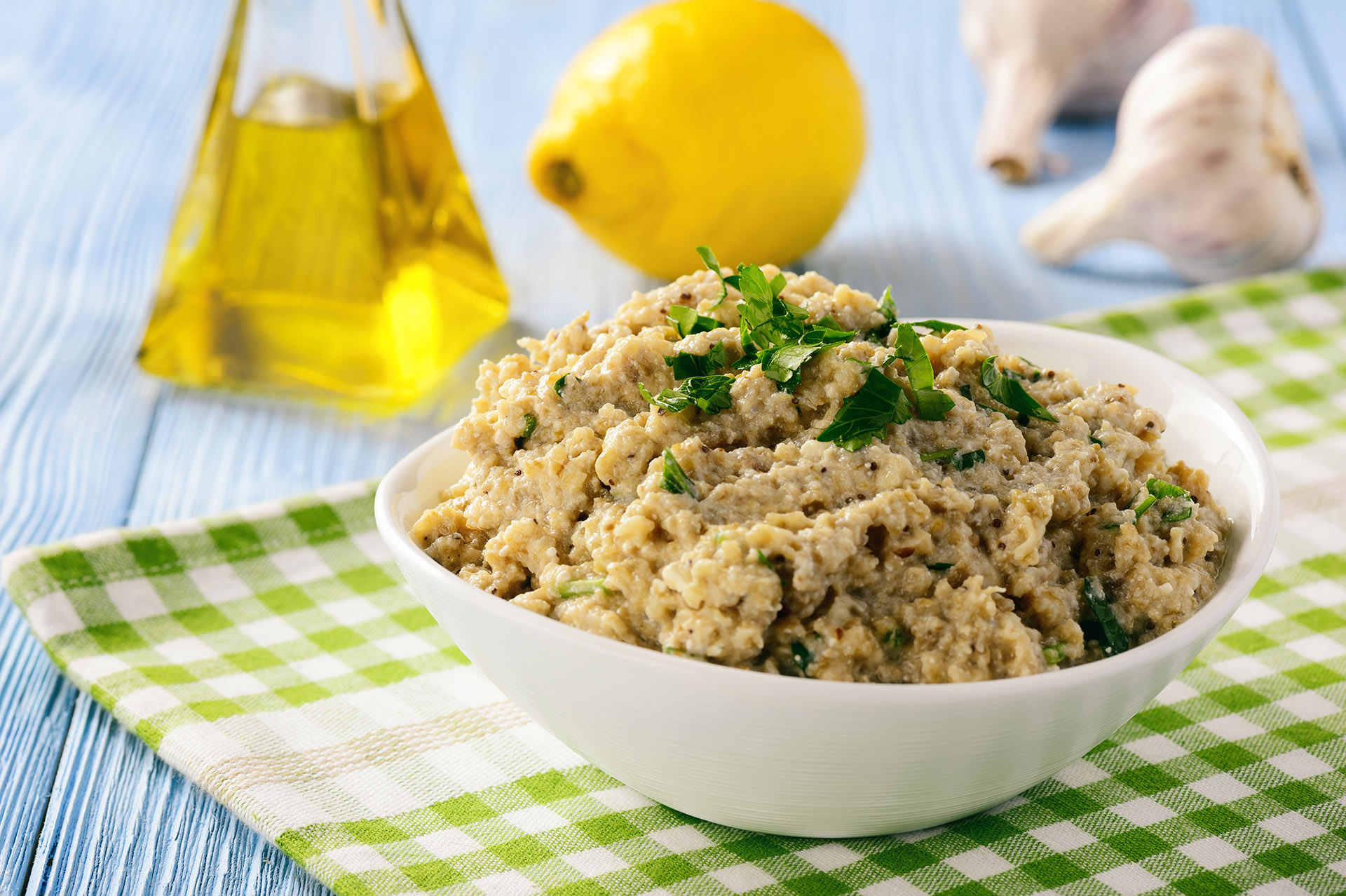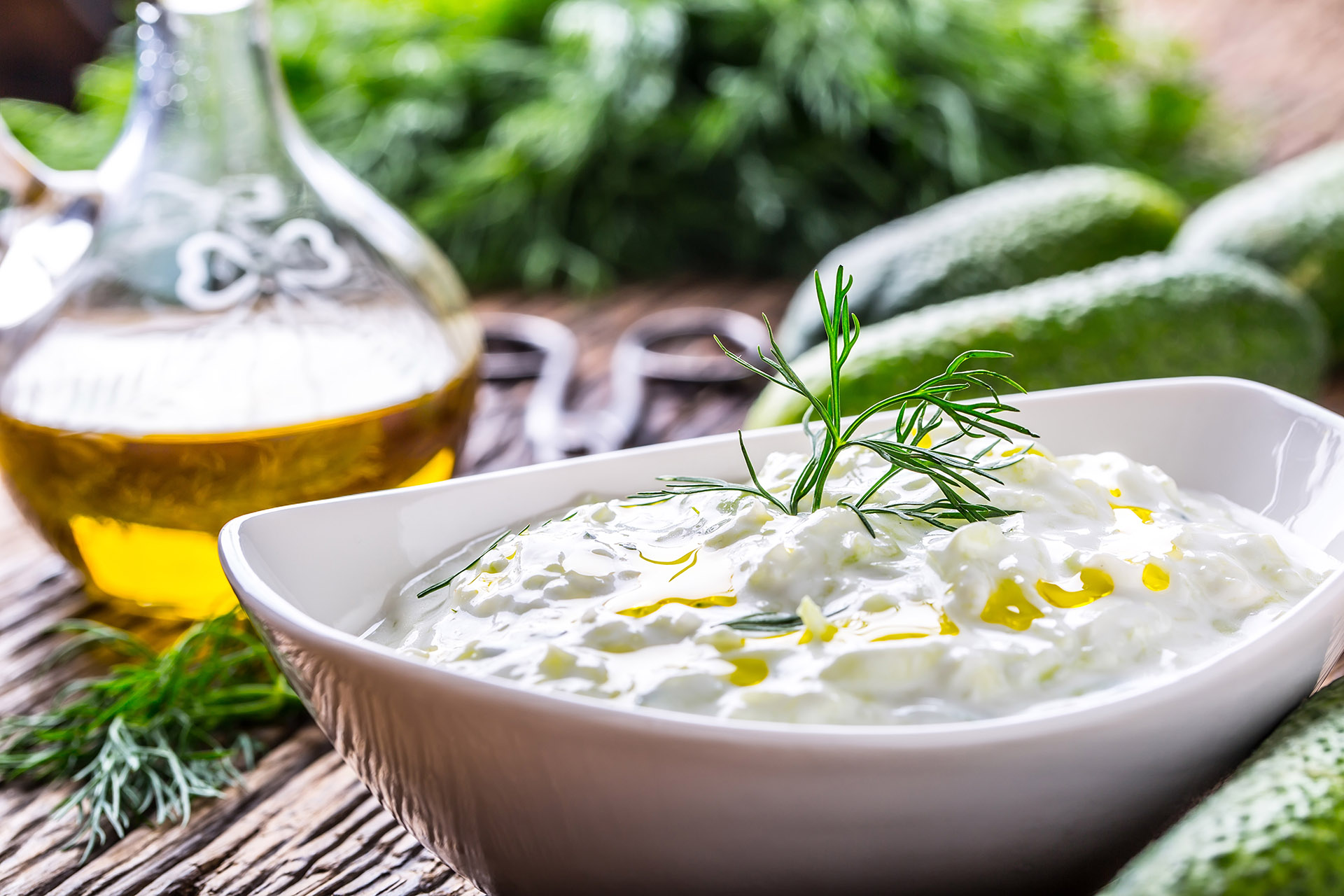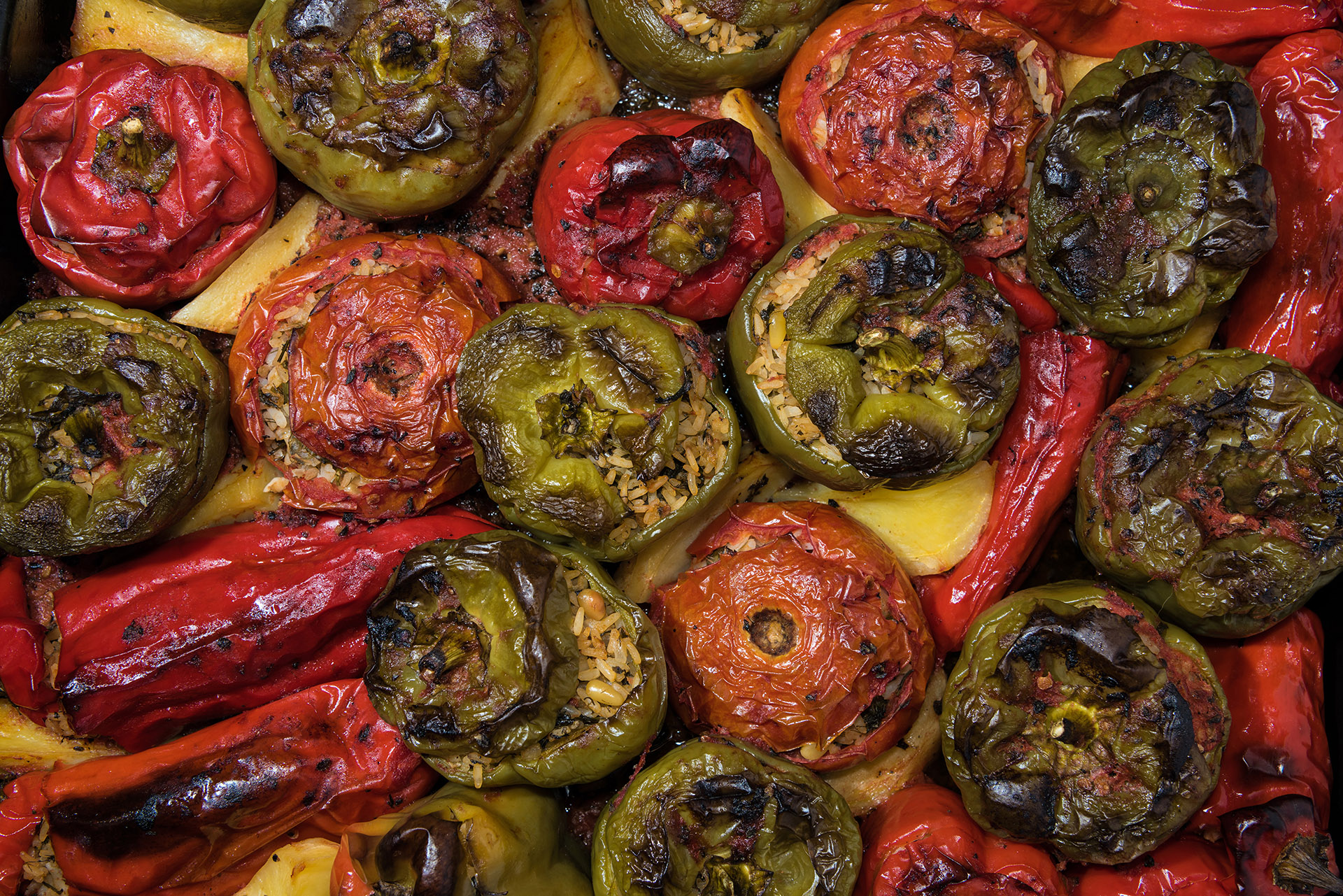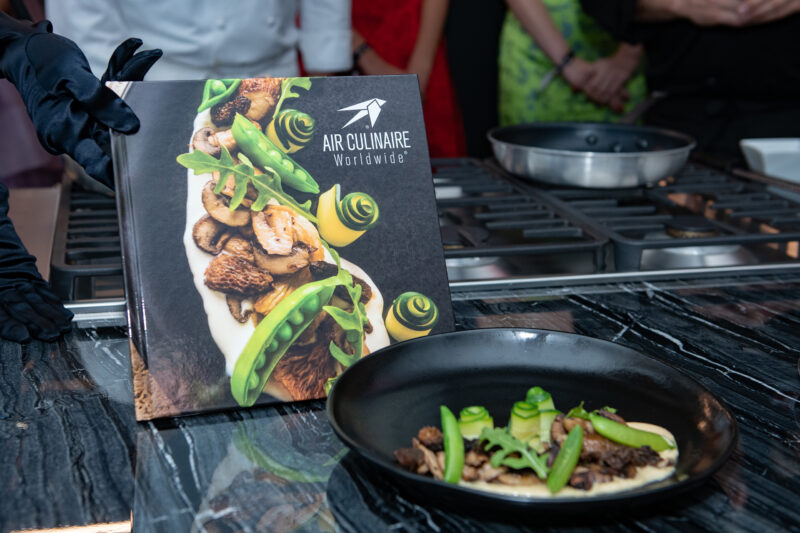article & photography by JULIA WOOD
production by JILLIAN KORKOSZ
For centuries, gastronomy has rested at the core of culture for many nations. Particularly in Greece, culinary arts are integral to cultural identity. In fact, etymology for the word “gastronomy” is rooted in the Greek language. The ways in which food is artfully crafted and consumed by our European counterparts is one of the many reasons they can be our muse.
One of the modern appreciations we can have for Greece and its exceptional gastronomy, is the native inclusion of vegetarian delights. So for those of you electing a more plant-based diet, or you’re simply a self-proclaimed foodie, Greece is the place to be. Below is a list of vegetarian delicacies that can be commonly found throughout Greece.
Amygdalota: Vegetarian and gluten-free, this almond cookie is enjoyed by many, typically with a frappe (Greek equivalent to iced coffee), for breakfast.
Baklava: If you haven’t tried baklava, then you haven’t been to Greece. This quintessential pastry is made from thin crisp layers of phyllo dough, nuts, and sweet honey.
Bougatsa: Another phyllo dough pastry filled with a lightly sweetened semolina custard. It is typically served in a rectangular-pie shape, sprinkled with cinnamon and powdered sugar.
Choriatiki / Horiatiki: A personal favorite, this is the traditional Greek salad. It can be found at nearly every restaurant within Greek borders. This dish includes chopped cucumber, tomato, onion, kalamata olives, and a generous amount of feta. Each chef will personalize the salad with their own blend of spices and herbs. It is best dressed with extra virgin olive oil and a side of grilled pita bread.
Dolmadakia: A meze dish found at many Greek restaurants, these are small grape leaves stuffed with rice and herbs. Occasionally, chefs will opt to include ground lamb, so take the liberty of asking whether or not the dolmades are vegetarian-friendly.
Fasolada: This is a very popular meatless soup enjoyed as a meze or main dish. It is traditionally composed of beans and vegetables.
Feta Me Meli: This is the pinnacle of a salty and sweet balance. This dish includes baked feta wrapped in phyllo dough, finished with a honey drizzle.
Galaktoboureko: This is a Greek dessert, similar to baklava. Galaktoboureko is made by layering buttery phyllo dough with syrup-infused custard.
Halvas: This is a naturally vegan dessert option. Halva is a simple blend of semolina, oil, sugar, and water (think: the beginning stages of cookie dough). These are commonly served beside ice cream.
Kolokithokeftedes (Courgette Balls): A very popular meze dish, these are small fried balls of feta and herbs that are perfectly crispy on the outside, but melting on the inside.
Kolokithokeftedes: While the name may appear the same as courgette balls, this recipe variation that resembles zucchini fritters is commonly found on Greek menus as well.
Loukoumades: The ultimate street sweets. These are bite-sized fried dough balls cooked to a golden perfection. While they are traditionally dressed with honey and walnuts, many restaurants now offer the option to choose your own filling and toppings.
Melitzanosalata: This is a Greek dip similar to hummus that is made with an eggplant base and chopped garlic, onion, and parsley. It can include a hint or lemon juice or red wine vinegar.
Tomatokeftedes: When in Santorini, you must try these tomato fritters. They can be found as meze and as main dishes. The fried tomato traditionally includes onion and mint.
Tzatziki: While in Greece, I consumed tzatziki every single day. While it is available at many places throughout the U.S., nothing compares to the tzatziki served in Greece. This is a classic Greek dip made from yogurt, olive oil, vinegar, cucumber, and dill. It is almost always enjoyed with pita, but will taste delicious on just about anything.
Yemista: This is a meze very similar to dolmadakia. While the dish varies at each restaurant, yemista is commonly served as a roasted tomato stuffed with seasoned rice and herbs.



